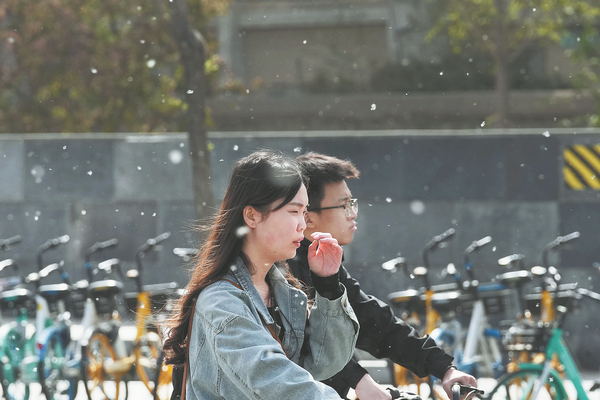

Wang Min, doctor of otorhinolaryngology at Peking University People's Hospital, said in an article that in addition to genetic factors, the influence of environmental factors cannot be ignored. For example, changes in air quality and the increased mental stress of modern life have an impact on inducing allergies.
Seasonal allergies are mainly caused by pollen. They begin every spring and autumn when pollen spreads. Symptoms abate when the flowering season passes. Itchiness in the eyes and nose and continuous sneezing appear instantly and can last for hours, days, or even weeks, the article said.
Che Shaochen, senior engineer at the Beijing Academy of Forestry and Landscape Architecture, said that plants with anemophilous flowers — including cypress, pine and willow trees — are the main source of allergens.
"The pollen of such flowers can be spread by wind because it is smaller than that of entomophilous flowers whose pollen is carried by insects. Large amounts of airborne pollen cause allergies," he said.
Pollen from peach and apricot blossoms and roses is usually collected and spread by insects. Due to small quantities of large pollen particles, such pollen has few opportunities to spread long-distance and limited power to cause allergies, he added.
He also said that the urban heat island effect and hardening roads make air disturbances more intense and cause pollen to hang in the air for a longer time.